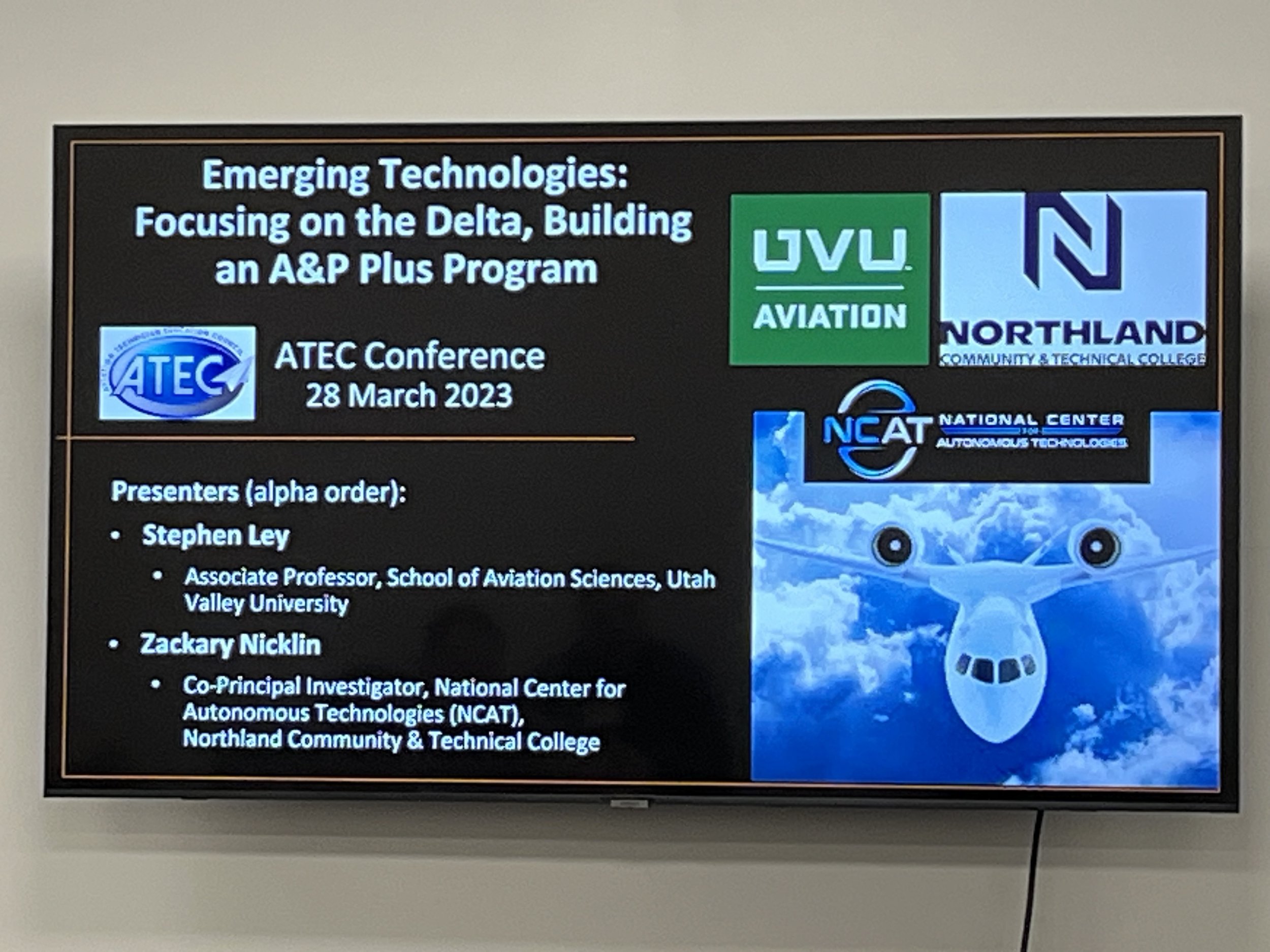Stephen Ley of Utah Valley University led off his day two ATEC breakout session with a provocative question: Why aren’t we adding additional ratings onto A&P certificates? He followed up with another question part 147 administrators need to be thinking about: What can we add on to A&P certificates make technicians more employable?
Ley and his colleague Zackary Nicklin highlighted advanced air mobility, electrified aircraft, and the space subsector as growing areas that will need technicians, and the training to accompany growing subsectors of aviation.

Ley first focused on advanced air mobility (AAM), defining it as safe, accessible, automated and affordable air transportation systems for
passengers and cargo capable of serving previously hard-to-reach urban and rural locations.
Ley shared videos highlighting the latest in AAM, including future designs from Airbus, Vertical, Lilium, Archer and this from Joby:
‘
Flying 150+ Miles with Joby’s Electric Vertical Take-Off and Landing Aircraft (eVTOL)
Throughout their presentation, Ley argued that new technologies are outpacing existing technician standards, the current 147 standards are
insufficient to sustain these new technologies, and that new standards must be developed and integrated into training curricula to ensure highly qualified technician workforce ready for the challenges of what’s next in aviation.
He said that FAA regulations at present are not ready for emerging technologies. Industry, education and training and FAA collaboration is
essential to meet our future workforce challenge.
MRO will need to change, said Ley, referring to operations in the field. AAM operators will need A&P mechanics that have avionics expertise at small repair stations. Aircraft will need to turn quickly and be in the air quickly.
Ley’s colleague Zackary Nicklin took over the second half of the presentation. He said that currently engineers are doing maintenance as they build new craft. As they scale and build more AAM aircraft these companies will need dedicated mechanics.

Nicklin shared their vision of how to create a technical workforce:

Nicklin argued that it’s essential to not add on to Part 147 now, keeping the Airmen Certification Standards as a core. He did recognize that the new 147 does not address new technology adequately. It’s missing high voltage, hybrid propulsion, space vehicles, rocket propulsion, eVTOL, Satcoms, and more. Long lead time and burdensome process for changes.
We can’t continue regulating by exception, said Nicklin in closing. Schools have tremendous flexibility to offer these courses. It allows you
to have a broader base of students. Think of not just teaching A&P students, but teaching A&P professionals if you do it really well.
ATEC Chicago closes Tuesday afternoon with an educator-employer networking reception.
